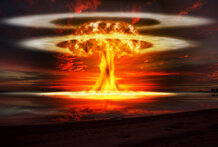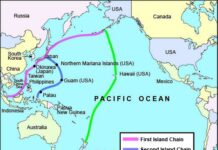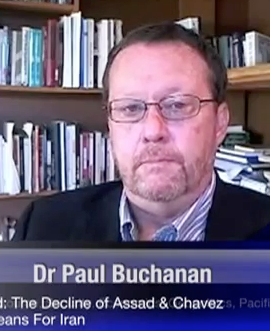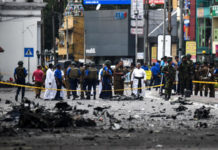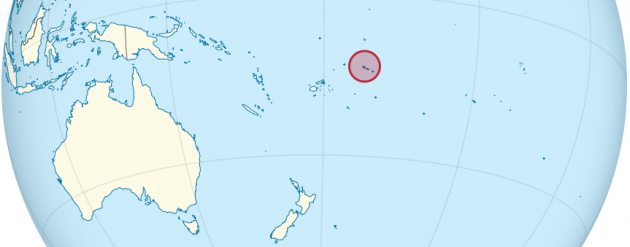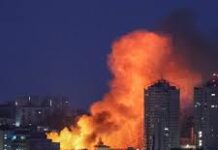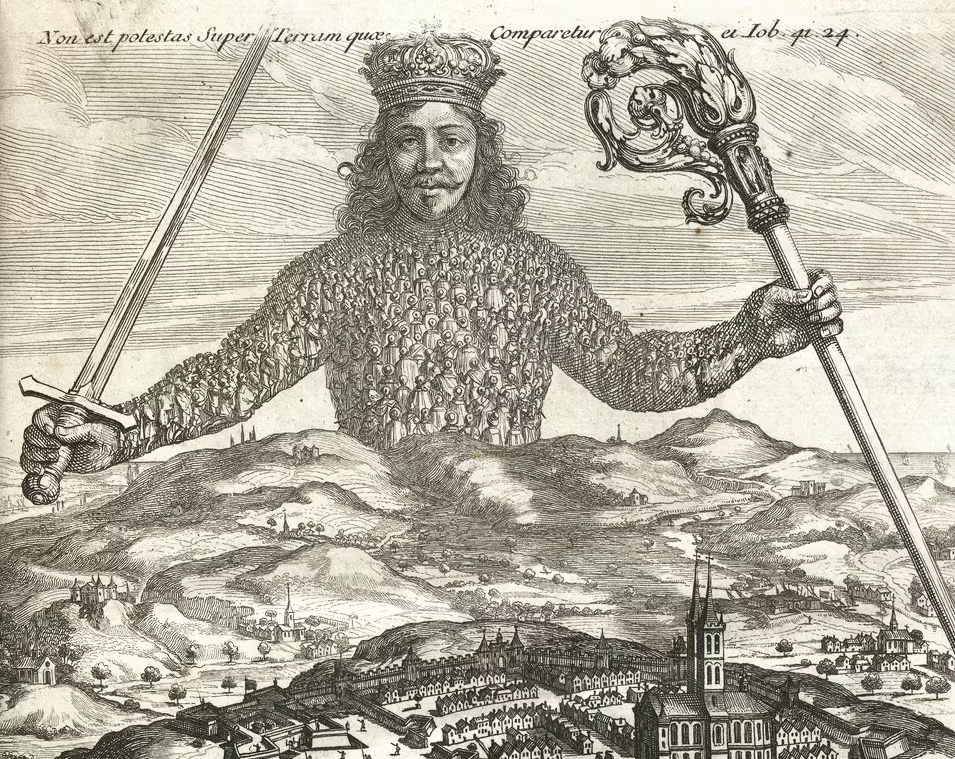State of the Nation Brief: Samoa at 50
Analysis – By Dr Paul G. Buchanan.
 Samoa (also known as Western Samoa) celebrated 50 years of independence from New Zealand last month. Located between 13.35 degrees and 14.9 degrees South and 169.35 and 172.20 degrees West and consisting of nine islands, it is the oldest of the post-colonial Pacific Island states, although it remains under the New Zealand security umbrella (Samoa has no military) and is very dependent on aid and remittances from it (there are 131, 000 Samoans living in New Zealand). It is formally organized as a parliamentary democracy with a Westminister-style cabinet governing a unitary republic. It has a unicameral legislature (fono) of 49 seats, divided into 47 members representing 41 voting districts ( six two-seat and 35 single seat constituencies) selected from 31,000 local chiefs (matai, 16,000 of which reside in Samoa and where approximately eight percent are women) and 2 members selected from commoners. With a resident population of 190,000, that means that less than 19 percent of Samoans are eligible to run for 95 percent of national elected office (and only ten percent are physically present to do so), while the majority are underrepresented at less than five percent of foro seats.
Samoa (also known as Western Samoa) celebrated 50 years of independence from New Zealand last month. Located between 13.35 degrees and 14.9 degrees South and 169.35 and 172.20 degrees West and consisting of nine islands, it is the oldest of the post-colonial Pacific Island states, although it remains under the New Zealand security umbrella (Samoa has no military) and is very dependent on aid and remittances from it (there are 131, 000 Samoans living in New Zealand). It is formally organized as a parliamentary democracy with a Westminister-style cabinet governing a unitary republic. It has a unicameral legislature (fono) of 49 seats, divided into 47 members representing 41 voting districts ( six two-seat and 35 single seat constituencies) selected from 31,000 local chiefs (matai, 16,000 of which reside in Samoa and where approximately eight percent are women) and 2 members selected from commoners. With a resident population of 190,000, that means that less than 19 percent of Samoans are eligible to run for 95 percent of national elected office (and only ten percent are physically present to do so), while the majority are underrepresented at less than five percent of foro seats.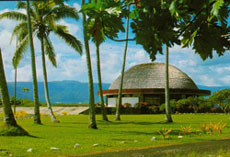
Save for a brief interregnum in 1985, the Human Rights Protection Party (HRPP) has controlled government since 1982, and Prime Minister Tuilaepa Aiono Sailele Malielegaoi has held his position since 1998, after three elections (fono members serve five year terms). Should tradition hold true and the HRPP continue to control parliament, he will be succeeded by the Deputy Prime Minister, Fonotoe Nuafesili Pierre Lauofo. Although opposition coalitions have been able to obtain up to 15 seats in legislative elections (the minimum number of seats required to be officially recognized as a party in the fono is eight), no one opposition party has held more than 14 seats in the fono at any one time (after the March 2011 legislative elections and a subsequent by-elections the HRPP has 37 and the Tautua Samoa Party has 12). Samoa is therefore one-party dominant, which makes the executive-legislative fusing of roles, frequent minority party-jumping and chiefly dominance of fonomembership combine to exhibit a soft authoritarian trait: the tendency to use informal lines of authority as well as formal electoral mandates to dictate rather than legislate public policy. Add to that the strong HRPP presence in police and civilian bureaucratic leadership positions (there are 11 administrative districts in the country) and the use of government appointments as sources of patronage and private gain, and the soft authoritarian traits of the central government are accentuated.
The issue of corruption and abuse of authority is a very sensitive topic in Samoa. Emblematic in that regard is the ongoing crisis within the Samoan Rugby Union (SRU), whose national team management has been accused by several national team players, including the former team captain, of misbehavior, corruption and fraud (Samoa is ranked tenth in the world, which is remarkable for a country of such small population size. Rugby has almost religious status and the national teams are a major source of hard currency income derived from international tournament appearances). The players were dropped from the national team and several SRU officials have been let go in in the wake of incidents during the 2011 Rugby World Cup in New Zealand, but the attitude of the SRU is considered to be symptomatic of a a more generalized sentiment on the part of Samoan elites. This has implications not only for Manu Samoa, but for the future of Samoan governance in general.
Two areas of civil society support for the Samoan political system as the Church and the German/Scot (and now Chinese) defended merchant class. There are several denominations of worship in Samoa, including Congregationalists, Roman Catholics, Mormons, Methodists, Seventh Day Adventists and the Assembly of God. Although they differ on particularities of religion and social order, as a group they serve as defenders of tradition and social hierarchy. Many Church leaders are matai, and church politics are very influential in the conduct of the Samoan political system. This makes the Church as a collective entity as strong support base for the political system as given.
Descendants of the German colonialists who ruled (Western) Samoa from 1899-1914 after the 1899 Tripartite Convention divided the Samoan islands into German and US territory (the other party to the Convention, the United Kingdom, relinquished all claims to Samoan territory in exchange for Germany relinquishing its claims in Tonga) have a strong influence in the merchant classes. This influence is shared with merchants of Scottish descent and most recently, Chinese natives and their heirs. Their influence on the regime is considerable, and as the more sophisticated socio-economic class due to their exposure to international commerce and trade (even if they are heterogenous as a “class”), they are very influential on matters of foreign policy. As a result they are also a pillar of the Samoan political system, although their receptivity to reform is considered to be greater than that of the Church hierarchy.
The central administrative apparatus is overlapped on the matai system, selection to which is determined by inheritance, kinship and clanship ties (often rooted in economic interest) rather than open contested elections. The judiciary is populated, and most local police and civil administrative decisions are made by matai. Given the limited capacity exercised by the Samoan state in remote areas of the archipelago, this makes for a de facto decentralization of authority that provides a check, if not a balance on the powers of the central government. Even so, chiefly ties permeate and inter-connect the matai system and central government, culminating in the composition of the foro. Although there has been universal suffrage over the age of 21 since 1990 (voters must be registered with a village in order to vote for matais in the general election while non-village affiliated voters elect two country-wide non-matai seats), there are many aspects of the local and national political process that are more opaque than transparent. This gives a strongly elitist as well as conservative nature to Samoan politics.
In light of the criteria for political selection at all governance levels and the selectively representative nature of the central government, the Samoan regime can be properly construed as a patrimonial democracy or hybrid regime that combines democratic and non-democratic features. It also is worth noting that with nearly the same number of Samoans living abroad as there are resident in-country (150,000, mostly distributed in American Samoa, New Zealand, Australia and the US), the role of remittances (which amount to 24 percent of GDP) and political influence of the expatriate community (including 15,000 matai) is particularly significant in Samoan government practice.
Comparatively speaking, Samoa represents a middle ground in regional politics. Where Fiji has regressed politically in the last decade (moving from a fragile democracy to a military-bureaucratic authoritarian regime) and Tonga has progressed along a path of political liberalization initiated by the late King Tupou V, Samoa can be seen as stable but stagnant. Continuation of nobility-based politics under an electoral umbrella has allowed for government continuity in a measure not seen in Melanesia and on a par with Tonga and some smaller Polynesian states, but it also has prevented effective re-generation of the Samoan political elite. Much of the Samoan intelligensia lives abroad and/or is disinterested in political life, so the long-term viability of the Samoan regime, however it is defined, remains open to question. Short term stability is strong, but medium and long-term stability are less certain. One of the measures of future stability is the economy.
Since the day of independence Samoa has moved from a primarily subsistence agriculture and artesian fishery-based economy to a mixed productive base that includes tourism, other services and limited industry as significant components. Tourism and other services account for over seventy percent of the national GDP (at US$1.1. billion), while industry makes up 13 percent and primary good production (agriculture, fisheries and forestry) 12 percent. Australia is Samoa’s largest trading partner (in terms of imports), and export markets in Asia and Europe have begun to replace the Antipodean markets that have been major export destinations since before independence. Traditional subsistence practices remain a major part of the national economy, albeit informally, and a large portion of the able-bodied workforce are not employed in value-added or scaled economic activity that is linked to larger productive chains. In fact, only 18 percent of the workforce is formally employed, with nearly sixty percent engaged in subsistence agriculture. Hence, as a country with a very small and unsophisticated internal market located in a geographically remote area with a limited resource base, dependence on imported fuel and lacking skilled labor, Samoa’s developmental possibilities are constrained. As a result foreign direct investment remains very modest in global terms (less than US$10 million in 2011 after a high of US$45 million in 2008), and constitutes less than two percent of Samoa’s GDP. As such it retains its Least Developed Country status under international conventions until 2014 (a status that Samoa lobbied to have extended rather than accept the guidelines governing the Developing Country category in international protocols).
Most excess Samoan labor moves overseas and contributes to the national economy via remittances. The impact of emigration is strong, with a national population growth rate of less than 0.5 percent in spite of a relatively high birth rate. Tourism (now the major economic sector), remittances, foreign aid and loans constitute the main sources of hard currency earnings in the country and compromise the majority of GDP. Bi-lateral and multilateral foreign aid amounts to approximately US$110 million per year (or about 11-12 percent of GDP), with 30 percent of that coming from Australia (New Zealand is Samoa’s second largest aid donor and China, the US and the European Union also contribute significantly). This gives the economy the classic features of intractable dependency (outlined in the a previous assessment here). Because of the sizable expatriate community, Samoa is one of the highest recipients of remittances as percentage of GDP (yet at 25 percent of GDP is lower than in Tonga at 42 percent). This expatriate community also is the source for thirty precent of tourist visits, so its economic impact is magnified. In contrast to other economies in the region that show signs of intractable dependence, Samoa has not experienced significant capital flight and has enjoyed low inflation and comparatively good growth rates over the least decade in spite of the global recession and a series of natural disasters that impacted heavily on the tourism sector and reduced exports. Forecasts remain positive for modest (1-2 percent/year) growth in the years ahead.
Although it continues to run very large trade deficits due to its limited export base, Samoa has worked to diversify its trade and investment relationships, moving away from its traditional focus on New Zealand, Australia and the US and towards Asia. A Japanese firm, Yazaki Samoa, manufactures automobile components for export and employs around 1000 people depending on market demand. A brewery (which has elected some social protests) and the banking sector also have been the object of foreign investment interest. Asian investors have started to expand the fisheries and forestry industries and the majority of infrastructure development projects are financed by Asian (most often Chinese) capital. Buildings housing central government offices and the Justice Ministry, as well as a national sports stadium were built by Chinese interests and financed by concessionary loans from the PRC that essentially amounted to goodwill gifts, and a national hospital and conference center currently under construction are similarly financed (and physically built) by the Chinese. A long-established Samoan Chinese community has facilitated cultural and diplomatic links with new Chinese economic partners and the PRC government.
Samoan Government Office Building.
One curious aspect of Samoa’s relationship with the People’s Republic of China is the very large amount of foreign direct investment originating in Samoa that goes into China. This apparent anomaly is explained by the phenomenon known as “round-tripping,” where investors confronted with restrictions and higher tax rates on direct investment in China use tax havens and countries with loose financial regulations to redirect capital through them as the source of FDI, thereby circumventing the constraints on and compliance costs of direct investment. This led to the absurdity of having Western Samoa listed as the source of origin for two percent of the FDI in China in 2004, exceeding that of several European and Latin American countries (involving several billion US dollars worth). In recent years, under international pressure to tighten its finance regulatory framework, Samoa has adopted reforms that have discouraged such practices, although money laundering and other “grey” financial transactions involving off-shore agents are believed to continue. This continues to cloud the real value of FDI to the Samoan economy and lowers its ranking on international anti-corruption and transparency indexes.
The approximation with Asia has altered Samoan foreign policy. It has been characterized as conservative and pro-Western in the past, and many aspects of that characterization remain true today. Yet over the last decade Samoa has followed its new trade and investment links with a more independent foreign policy orientation based on the cultivation of diplomatic ties with Asian countries. This follows the more general re-orientation of the “Looking North” policy that is subscribed to by most independent Pacific Island Countries, including Tonga and Melanesian states. Samoa has the advantage of a long-established and well-integrated Chinese community, which has made the incorporation of Chinese economic interests easier than in other countries where resistance to Chinese influence is stronger.
Samoa has the characteristics of a dual society, with a small urban and globalized elite and middle class (with a strong ethnic Chinese presence) and a large rural, non-urbane peasant and small farming class. Tourism enclaves have accentuated the urban-rural divide in some remote areas, and urban matai account for the bulk of the “sophisticated” classes. Although cultural traditions remain strong and non-commodified relationships are highly valued, the impact of foreign influences (both direct and as channeled by the expatriate communities) has eroded some aspects of traditional social hierarchies, something that increases along generational lines (see, for example, the influence of expatriate Samoan “rappers” on indigenous youth culture). This has been compounded by exposure to foreign tourists and aid and development programs, particularly those of Western states that put a premium on “good governance” based on notions of transparency and due process. Taken together, technological and the impact of other human environmental changes make for a society in gradual transition from tradition to modernity.
The darker side of globalization has affected Samoa not only in the form of the “round-tripping” phenomena and related instances of non-trasparent financial practices, but also in the form of new criminal activity, particularly the trans-shipment and manufacture of narcotics and their precursor chemical components. Issues of lax border and financial controls and significant public sector corruption have facilitated the emergence of new and more sophisticated non-indigenous criminal syndicates, although overall incidences of drug use and trafficking remain low in comparison to Australia and New Zealand (the preferred destination for narcotics and narcotic precursors originating in Asia). Law enforcement officials also are concerned about the possibility that Samoans engaged in organized crime in the US, Australia and New Zealand will use their cultural ties to exploit Samoa’s security weaknesses in order to network with Asian crime syndicates for mutual gain (the Samoan Transnational Crime Unit consists of a sergeant and three uniformed officers). Otherwise and in spite of changing social mores and isolated instances of violence associated with criminal enterprise (including a recent death connected to a shoot-out between Samoan Police and drug traffickers), crime rates remain low in Samoa, and violent crime other than domestic violence is very low in comparison to other areas of the South Pacific.
Futures Forecast: Social and political stability will remain strong for the next few years but could begin to weaken by the elections of 2016.
Stability Score (1=high, 10=unstable): Near Term: 2; Medium Term: 5.
- Govt.ws – Western Samoa Governemnt Site
- Parliament.gov.ws – Western Samoa Parliament Site
- SBS.gov.ws – Country Brief
- Mfat.govt.nz – Samoa
- State.gov – Samoa
- Dfat.gov.au – Samoa Brief
- Heritage.org – Samoa
- Ondd.be – AllWeb/Samoa+(Western)
- Theglobaleconomy.com – Samoa indicator
- Pacs.canterbury.ac.nz – Civil_Society (pdf)
- Wikimedia.org – Polynesia Centered Map





